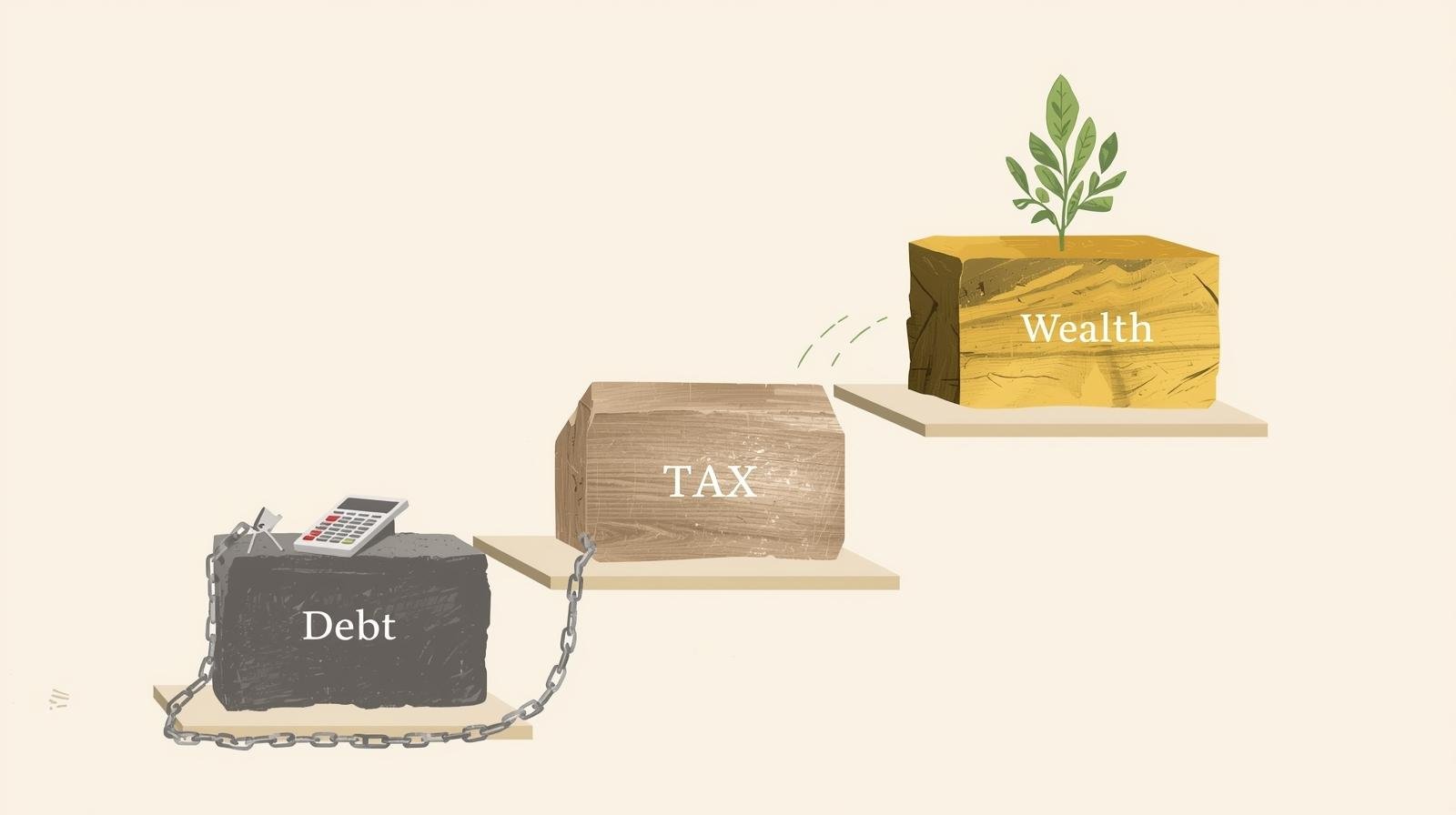Why You Should Buy Term and Invest the Difference
You’ve probably heard the pitch: “Protect your family and build wealth – all in one plan.” It sounds smart, even sophisticated. The salesperson calls it Whole Life or Universal Life insurance, hinting that it’s a “secret of the wealthy.” But for most Canadians, this so-called investment is a costly trap. The truth? Life insurance is meant to protect your family, not grow your money. The smarter strategy – and the one the financially savvy quietly follow – is simple: buy term and invest the difference.
They’re often sold with high-pressure tactics, especially to newcomers and families eager to make the “right” financial decision. But is this all-in-one product really a good investment for the average Canadian? The short answer is NO.
For most of us, mixing your insurance and your investments is a financial mistake. I follow one simple rule of thumb, and I recommend you do, too: Don’t mix insurance and investing.
It is almost always better (and far cheaper) to buy low-cost term life insurance and invest the difference in a good, low-fee growth fund.
This strategy is called “Buy Term and Invest the Difference” (BTID), and here’s why it works.
Section 1: The Real Job of Life Insurance
To understand why these products fail, we first need to understand the job of life insurance.
The primary purpose of life insurance is to act as a financial safety net. It’s not a growth engine; it’s a parachute. Its job is to replace your income and cover your debts (like a mortgage) if you pass away, ensuring your loved ones are not left in a financial crisis.
Term Life Insurance does this job perfectly.
- It’s simple: You pay a monthly premium for a “term” (e.g., 20 or 30 years).
- It’s affordable: Because it’s “pure” insurance, the cost is very low.
- It’s effective: If you die during that term, your family gets the full payout, tax-free.
Section 2: The “Investment” Trap: What is Cash Value Insurance?
The products salespeople push are a different category called “cash value” insurance. The most common types are Whole Life and Universal Life.
Here’s the concept:
- You pay a premium that is massively higher than a term policy.
- A small part of that premium pays for the actual insurance.
- The rest (the “overpayment”) goes into a “cash value” account that grows, tax-deferred, like an investment.
This sounds good. A forced savings plan and an insurance policy in one. But the reality is that you are buying two mediocre products for a very high price.
Section 3: 5 Reasons Cash Value Life Insurance is a Bad Investment
When you look under the hood, these all-in-one policies fall apart for most people.
1. The Fees are Massive
A huge portion of your premiums, especially in the first 10-15 years, doesn’t even go into your cash value. It goes to the salesperson as a high commission and to the insurance company to cover administrative costs. If you try to cancel your policy early, you’ll be hit with massive “surrender charges” and will likely get back far less than you even put in.
2. The Returns are Poor
Insurance companies are not high-growth investors; they are conservative. The internal rate of return on your cash value is often very low, especially after all the fees are skimmed off the top. You are almost guaranteed to get better long-term returns from a simple, low-cost ETF or mutual fund.
3. It’s Incredibly Expensive
Let’s use an example. A healthy 35-year-old might get a $500,000, 20-year term policy for $40 per month. A whole life policy with the same $500,000 death benefit could cost $400 per month or more. That’s a “difference” of $360 every single month.
4. The “Lapse Risk” is a Disaster
This is the biggest danger. These policies are so expensive that they are difficult to maintain. What happens if you lose your job or face a financial emergency? You can’t afford the $400/month premium. The policy “lapses.” You lose your insurance coverage and you can lose all or most of the thousands of dollars you paid in. A cheap $40/month term policy is much easier to keep paying during hard times.
5. It’s Needlessly Complex
Loans, withdrawal rules, dividend projections, adjustable premiums… this complexity is a sales feature, not a user benefit. It makes it very difficult for you to understand what you’re actually paying for and how poorly your “investment” is truly performing.
Section 4: The 1% Exception: Who Should Buy This?
To be fair, these policies aren’t useless. They are just designed for a tiny fraction of the population:
- High-Net-Worth Canadians who have already maxed out all other registered tax-deferral accounts (like their TFSA and RRSP) and need another tool for estate planning.
- Business Owners who need to fund a complex buy-sell agreement or compensate key partners.
- Individuals with Lifelong Dependents (e.g., a child with special needs, who requires ongoing funding for a trust.
If you don’t fit into one of these niche categories, you are not the target audience for this product.
Key Takeaway:
Keep It Simple — Protect Smart, Invest Wisely
For 99% of us, the smartest move is clear: separate your insurance from your investments.
- Step 1: Buy a low-cost term life insurance policy. Get just enough to cover your debts and replace your income for as long as your family needs it (e.g., until the kids are grown and the mortgage is paid).
- Step 2: Invest the difference. Take that $360 (or more) you saved every month and put it into a good, low-cost growth ETF inside a tax-sheltered account, like your TFSA or RRSP.
Don’t build wealth for your insurance company — build it for your family.



